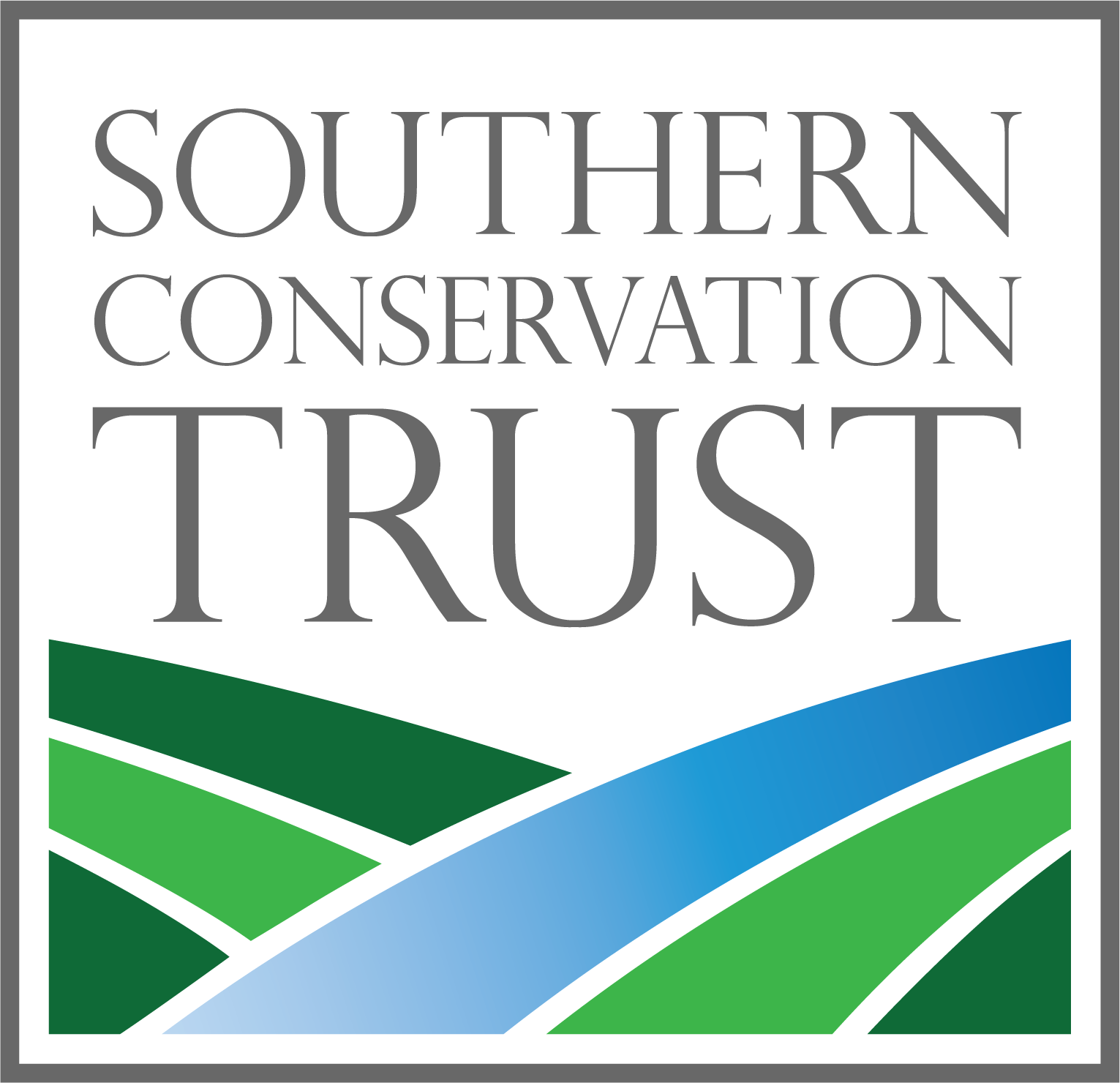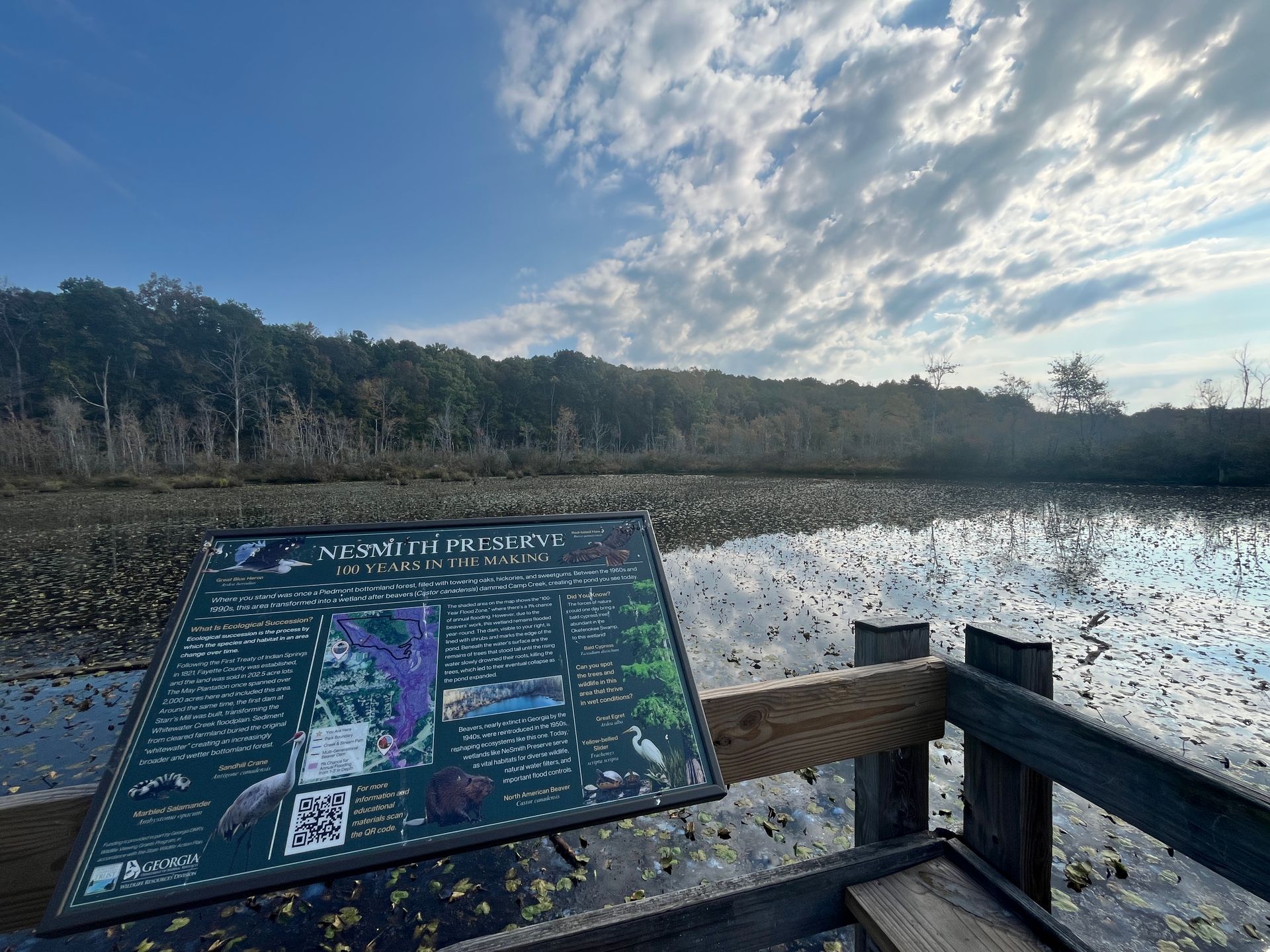Girdling for Good
We Didn’t Start the Fire:
Burn Unit 7
Written by: Paxton Caroline Hayes
Photos taken by: Paxton Caroline Hayes
Location:
Sweetwater Creek in Lithia Springs, Georgia
A Natural and Unnatural Process
You may have heard about the girdles of the 1930s from your great-grandmother, but this land management technique is not something found in a clothes drawer. Girdling is the severe injury or complete removal of bark from the trunk or branch of woody vegetation. When this occurs, the internal structures of the trees are exposed or damaged, eventually causing the tree to die.
Animals, such as beavers and woodpeckers, can girdle trees as a result of foraging for food and creating spaces to live. Vines, like invasive wisteria, will girdle trees as they climb and twine around trunks and branches. Today, humans will girdle trees as a way of cultivating larger fruit or killing unwanted trees to create quality habitat for native species.

How It Works
Earlier this October (the very end of the growing season in Georgia), I was able to join a small team of Georgia Department of Natural Resources staff at Sweetwater Creek State Park to prepare sites for a prescribed burn. In a multi-year effort, this section of the park is being restored to a patchwork of native, open prairie grassland bordered by diverse forest stands. That day, our focus was on girdling one highly detrimental, invasive species in particular: Bradford pears.
Each Bradford pear tree we came across was first damaged using an axe or chainsaw, in a ring around the entire trunk of the tree. A targeted herbicide mixture was then sprayed into the wound we created. This system greatly damages the trees ability to transport nutrients to its branches and roots. With time, the tree will die above and below the soil. Additionally, girdling helps prevent the tree from re-spouting (like if the trunk was broken from storm damage).
This is not the only way to girdle a tree, though. If you do not want to use herbicide, you can create a gap in the bark around six inches wide, which is large enough that the tree will be unable to repair itself. With some species of trees, you can remove chunks of bark easily with a prybar and will not need to use any other tools. With other types of hard-barked trees, you may need to use a mallet to break the bark up before it can be removed. Girdling is also completely ineffective for species that re-sprout from their root system, instead of from a central trunk. Before you start to girdle, research the best method for your bark and tree type so that your efforts are successful!
Minimizing Disturbance
An attempt to remove Bradford pears from this burn unit with mechanical means (bringing in heavy machinery to cut them down and remove the lumber) would have greatly disturbed the habitat. Chemical treatments were also impractical due to the size, age, and sheer volume of Bradford pears within this burn unit. Therefore, girdling was the best option while having additional positive benefits: adding nutrients back to the soil and creating habitat as the trees decay.
Removing or killing trees is sometimes a necessary part of land management, and girdling provides us with an option that has added environmental benefits to native species. After the girdling is completed, the tree is left to die over the course of a few months or a few years (depending on the size and age of the tree). As it dies and decays, nutrients are released back into the soil to be used by other species.
Fallen limbs and, eventually, the fallen trunk, create habitat for a diverse range of species to use for shelter and food. Beetles, snakes, salamanders, and woodpeckers all require tree fall for nesting and foraging. Small mammals will also use decaying wood to keep warm over winter periods and protect themselves from predators. Tree fall is a natural occurrence in forest habits and girdling allows land managers to mimic that process while removing invasive or overly crowded trees.

Where Can I Learn More?
Tree Girdling Tools - US Forest Service (1999)
How to Kill a Tree by Girdling 2021 (species disclaimer: this video was filmed in South Dakota)
Chainsaw Usage: Girdling and Herbicide
Girdling of Woody Invasive Species (species disclaimer: created for the Great Lakes region)
Press & Media Inquiries
Contact Us
About Southern Conservation Trust
At Southern Conservation Trust, we are passionate about elevating nature through exceptional stewardship. Based in Georgia, our 501(c)(3) public charity has successfully conserved over 65,000 acres of land across the Southeast, including five public nature areas in Fayette County and the Fayette Environmental Education Center. We believe that protecting our natural spaces is just the beginning; everyone should have equal access to enjoy the beauty of the outdoors. Join us in our mission to foster a deeper connection between people and nature. Learn more at www.sctlandtrust.org.











